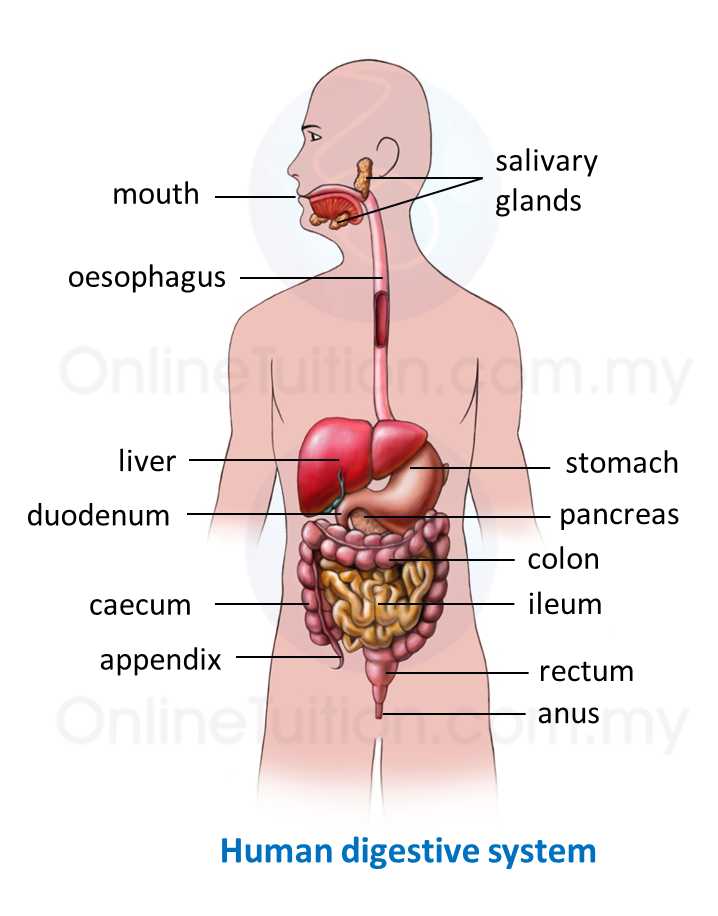9.4.1 Human Digestive System
1. The human digestive system comprises of the alimentary canal which starts at the mouth and ends at the anus.
2. The parts of the human digestive system are:
(a) mouth
(b) oesophagus
(c) stomach
(d) duodenum (first part of small intestine)
(e) ileum (rest of small intestine)
(f) large intestine (caecum, colon, rectum)

Digestion in the mouth
1. Digestion of food begins in the mouth.
2. The chewing action breaks the food into smaller pieces. This makes it easier to swallow the food and increases the surface area for chemical digestion by enzymes.
3. There are three pairs of salivary glands in the mouth to produce saliva.
4. Saliva contains the enzyme salivary amylase which begins the hydrolysis of starch to maltose.
5. The food particles are rolled into a small ball called bolus.
6. During swallowing, the bolus enters the oesophagus.
Oesophagus
1. The bolus moves along the oesophagus by a process called peristalsis, a series of wave-like muscular contractions along the oesophageal wall.
2. Mucus secreted by the oesophagus wall to lubricate the passage of the bolus.
3. When the cardiac sphincter relaxes, the bolus enters the stomach.
Digestion in the stomach
1. Gastric glands in the walls of the stomach secrete gastric juice.
2. Gastric juice contains hydrochloric acid and the enzymes pepsin and rennin.
3. Hydrochloric acid
(a) Creates an optimum pH (1.5-2.0) for the action of the enzymes pepsin and rennin.
(b) Stops the activity of salivary amylase.
(c) Kills bacteria that are present in the food.
4. Pepsin hydrolyses the protein molecules into smaller polypeptides.
5. Rennin coagulates milks by converting the soluble milk protein, caseinogen, into insoluble casein.
6. The regular churning movements of the stomach mix up the gastric juice with food.
7. The food remains in the stomach for 2 to 4 hours.
8. The semi-liquid food is called chyme.
9. The pyloric sphincter then relaxes. It allows the chyme to enter the duodenum, a little at a time.